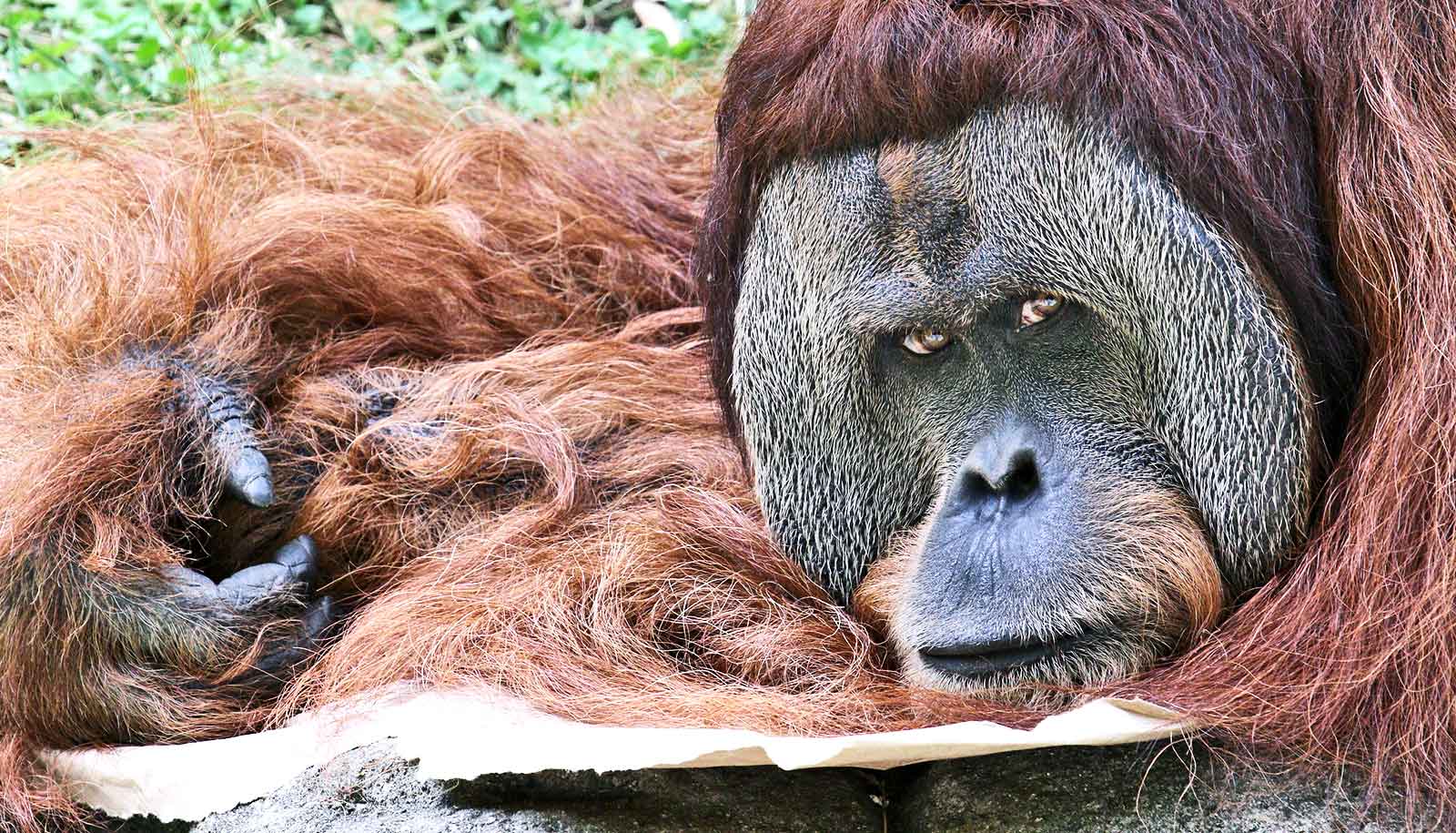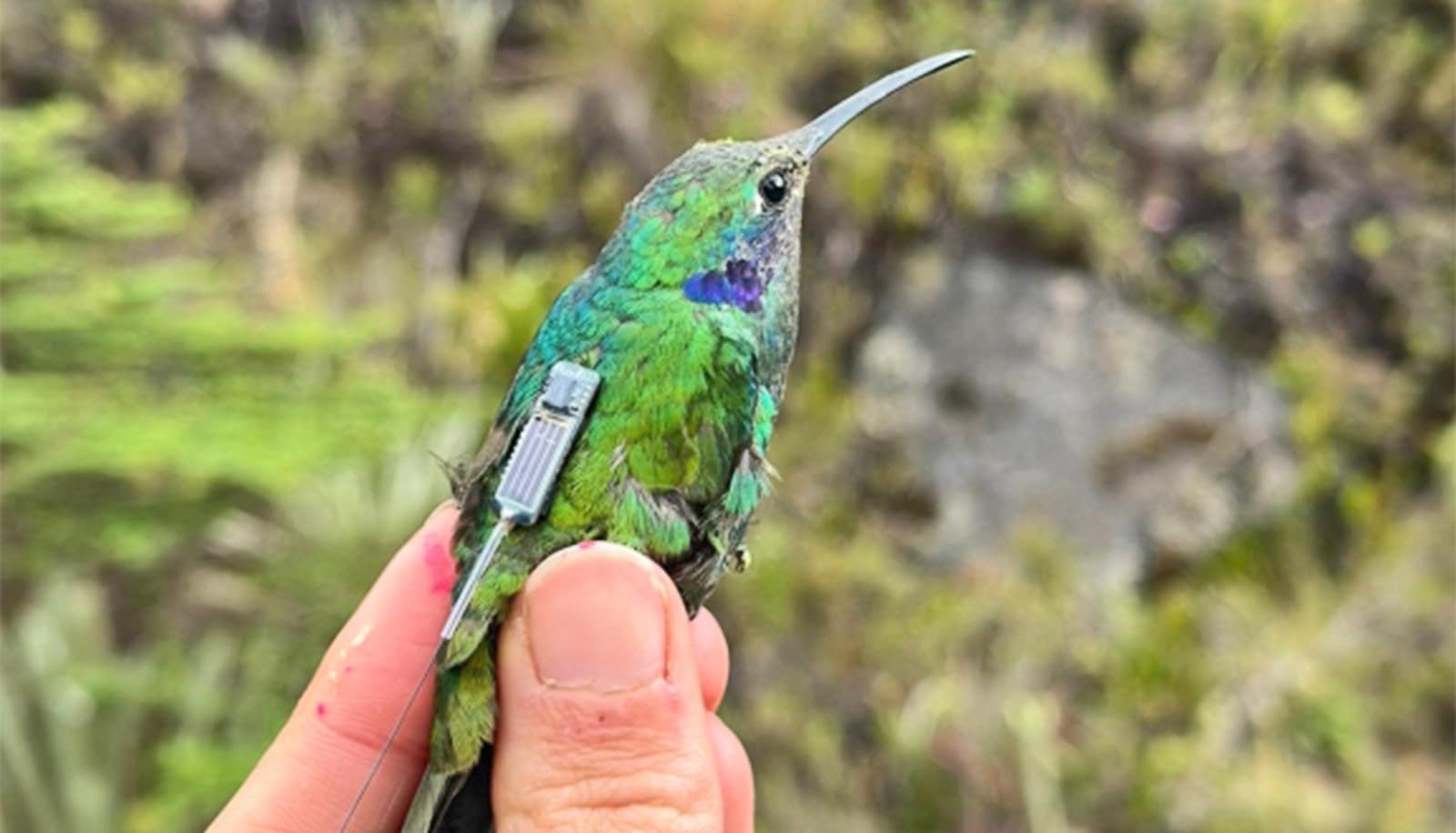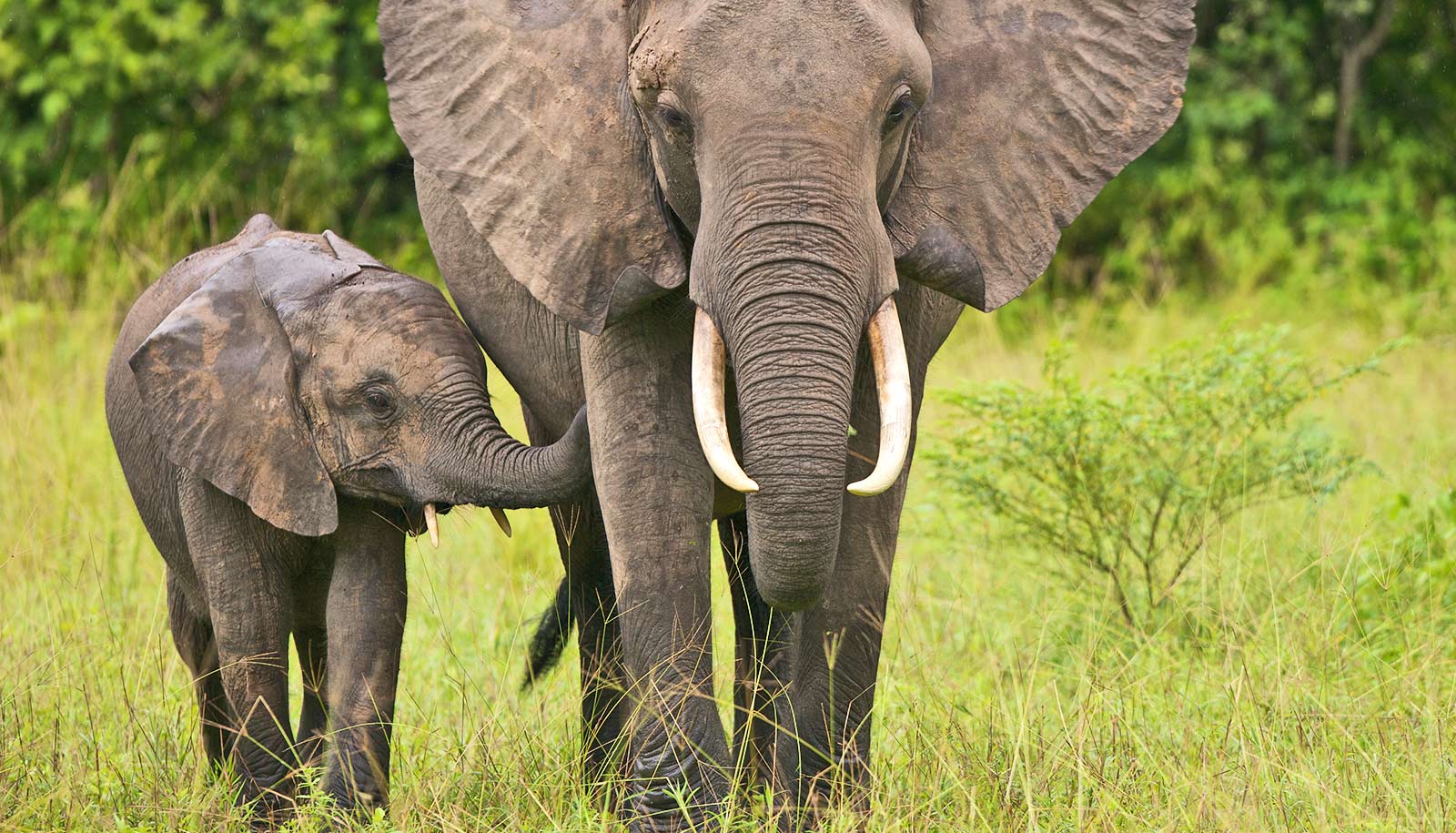While scientists have long viewed orangutans as an ecologically sensitive species, they can, and do, inhabit areas humans have altered, according to a new synthesis of existing evidence. The findings may be good news for the survival of the species.
Orangutans are a critically endangered, formally protected species. Researchers estimate their current population is less than 1 percent of what it was before humans began encroaching on their habitat 70,000 years ago.
“There’s really quite a long history of humans and orangutans co-existing.”
Dating back to the Pleistocene, they lived in populations ranging from the islands of Sumatra and Borneo all the way to China and Southeast Asia. But beginning 20,000 years ago, their range shrank to just Sumatra and Borneo.
The review, which appears in Science Advances, examines how humans have affected orangutan populations over the last 100,000 years.
“There’s really quite a long history of humans and orangutans co-existing,” says coauthor Andrew Marshall, a biological anthropologist at the University of Michigan. “Understanding this not only sheds light on the evolutionary history of orangutans, but also gives us a sense of how to preserve them in the face of current changes in global climate and land use.”
Ignoring interaction between humans and orangutans obscures understanding of orangutans and has an impact on conservation efforts, says lead author Stephanie Spehar, an associate professor of anthropology at the University of Wisconsin Oshkosh.
“It was often assumed that environmental factors like fruit availability were primarily responsible for most features of modern-day orangutans, such as the fact that they usually live at low densities and have a restricted geographic distribution,” Spehar says.
“However, the orangutan that existed before modern humans arrived in Southeast Asia 70,000 years ago may have been quite different. Our synthesis of fossil, archeological, genetic, and behavioral evidence indicates that long-term interactions with humans shaped orangutans in some pretty profound ways.”
The study shows that orangutans were once far more widespread and abundant, with orangutan teeth among the most common animal remains in deposits in China, Thailand, and Vietnam. They weathered many environmental changes and may even have lived in a wider range of environments than their modern counterparts.
That ability to survive in a range of habitats may persist today. Researchers estimate that over 75 percent of orangutans currently live outside of protected areas—a relief, Marshall says, because the populations of orangutans inside protected forests aren’t large enough to keep the species from going extinct.
“For a long time, we had this view of orangutans as being ecologically very sensitive. We believed they inhabited only pristine, untouched forest and almost never came to the ground,” says Marshall, who also has appointments in the Program in the Environment and the ecology and evolutionary biology department.
“As we did more surveys of their populations, it became increasingly clear that they persist in a much wider range of environments, often in close proximity to people and in forests that have been commercially logged.”
Marshall says hunting has the greatest impact on orangutan populations. In reasonably good habitats, a population can support 1 percent loss per year. Two to 3 percent is enough to drive the population to extinction. Female orangutans have babies only every 8 to 10 years, the slowest known reproductive rate of any mammal.
Wildfire smoke is messing with orangutan diet and sleep
Conversely, the researchers found that orangutans are able to live in logged forests and even spend time in oil palm plantations.
The findings call for a multifaceted approach to orangutan conservation that incorporates human-dominated landscapes but reduces hunting and increases habitat quality and connectivity, the researchers say. Such an approach requires developing sound policies, enforcing existing laws, and promoting cooperation among stakeholders.
“The good news is that multi-use landscapes can sustain orangutan populations as long as we manage them well, and a big piece of that is to prevent them from being hunted,” Marshall says.
How to save orangutans: High-calorie forests
“Our emerging understanding of orangutans’ ecological flexibility and adaptability gives us new opportunities and new hope for conservation; at the same time, it pinpoints what kinds of things really must be avoided if we are to prevent the extinction of orangutans.”
Source: University of Michigan



